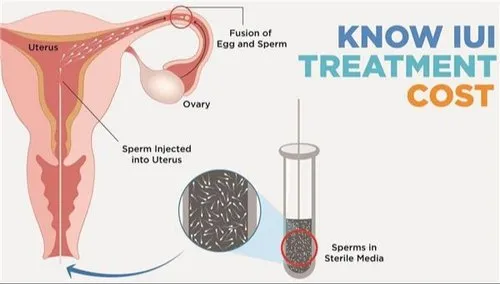Intrauterine insemination (IUI) is a fertility treatment that involves placing sperm directly into a woman’s uterus to increase the chances of pregnancy. It is a commonly used procedure for couples who are struggling to conceive and can be an effective treatment option in certain cases. In this article, we will explore what IUI treatment is, how it works, and who may benefit from it.
How Does IUI Treatment Work?
IUI Treatment In Patna involves several steps, including ovulation induction, sperm preparation, and insemination.
Ovulation Induction:
The first step of IUI treatment is to stimulate ovulation. This is typically done using fertility drugs that help stimulate the ovaries to produce more eggs. The timing of the medication is crucial, and the woman will need to have regular ultrasounds to monitor the development of the follicles in the ovaries.
Sperm Preparation:
The next step is to prepare the sperm. The sperm is typically washed and concentrated in a laboratory, which removes any dead or slow-moving sperm and increases the concentration of healthy, motile sperm.
Insemination:
Once the sperm has been prepared, it is inserted into the uterus using a catheter. The process is relatively painless and takes only a few minutes. After the insemination, the woman will be advised to rest for a short period before resuming normal activities.
Who Can Benefit from IUI Treatment?
IUI treatment may be an appropriate treatment option for couples who have been trying to conceive for six months to a year without success. It may also be recommended for couples who have fertility issues such as low sperm count or motility, unexplained infertility, or cervical issues.
IUI treatment may also be recommended for couples who are using donor sperm or for women who are using a sperm donor for single motherhood or same-sex pregnancy.
IUI Treatment Success Rates
The success rates of IUI treatment can vary depending on several factors, including the age of the woman, the quality of the sperm, and the number of treatment cycles. According to the American Society for Reproductive Medicine, the success rate of IUI treatment is around 10-20% per cycle for women under the age of 35. The success rates decrease with age and other factors that affect fertility.
Risks and Side Effects of IUI Treatment
IUI treatment is a relatively safe procedure with few risks or side effects. However, as with any medical procedure, there are some risks involved.
Multiple Pregnancy:
One of the main risks associated with IUI treatment is the risk of multiple pregnancies. This is because fertility drugs are used to stimulate ovulation, which can result in the release of more than one egg. If more than one egg is fertilized, the woman may become pregnant with multiples.
Infection:
There is a small risk of infection associated with IUI treatment. The risk is higher if the woman has a pre-existing infection or if the procedure is not performed in a sterile environment.
Cramping and Spotting:
Some women may experience cramping and spotting after the IUI procedure. This is a common side effect and usually goes away within a few days.
Conclusion:
IUI treatment is a safe and effective fertility treatment that can help couples struggling to conceive. It involves the placement of sperm directly into the uterus, which increases the chances of fertilization.
